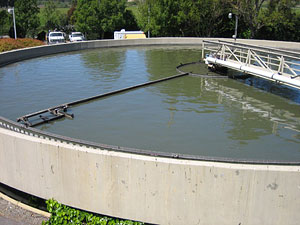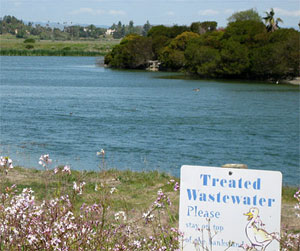 Unless our sewage happens to end up in the Bay and in the headlines, most of us probably never give a second thought to where our wastewater is headed each time we run the tap or flush the toilet.
Unless our sewage happens to end up in the Bay and in the headlines, most of us probably never give a second thought to where our wastewater is headed each time we run the tap or flush the toilet.
To learn more about the travels of sewage, I took a tour of the Las Gallinas Valley Sanitary District treatment plant led by Plant Manager Matt Pierce. The plant has been in operation for about 50 years and serves over 30,000 residents in north San Rafael.
After leaving sinks and showers throughout the District, wastewater travels through a network of pipes and pump stations. Once the sewage arrives at Las Gallinas, it passes through an inlet screen and a grit chamber, which together remove much of the dense, inorganic material-"like diamond rings," Matt jokes.
A lot of what happens at the plant is not that different from what happens in your compost pile: "It's basically bacteria at work," Matt points out. (The much bigger challenge for sanitation districts these days are all the unnatural things we're putting down the drain: household chemicals, personal care products, pharmaceuticals.)
From the grit chamber the sewage heads into a series of clarifiers, where gravity causes the organic solids to settle out. The biosolids pass through a thickener and then an anaerobic digester-the most, ahem, aromatic stop on our tour. After further thickening in storage ponds, the sludge is injected into a disposal field.

